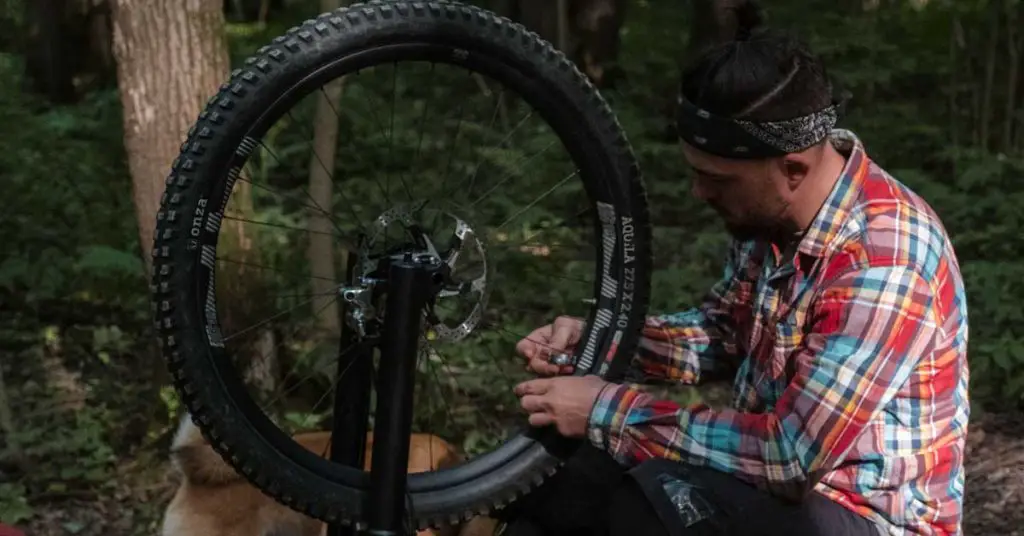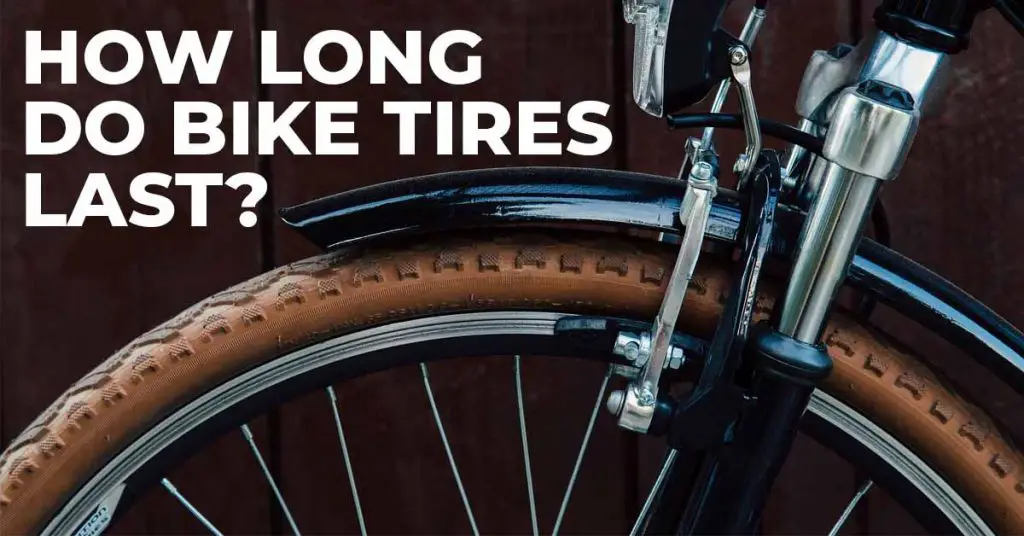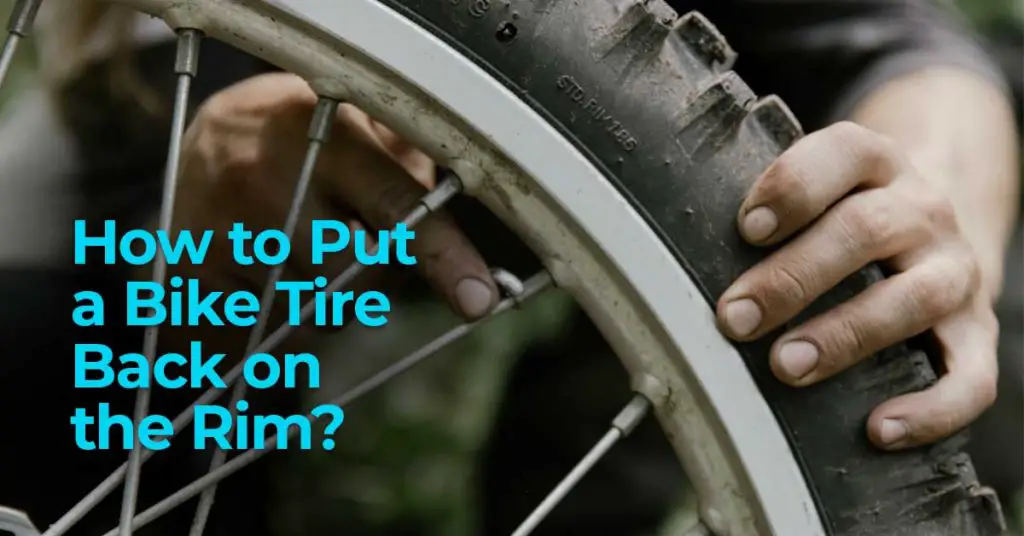Table of Contents
The longevity of a bike tire is determined by the number of miles it travels and the amount of wear that it sustains. A new tire can last up to 3,000 miles before its tread wears down enough to require replacement. As you ride your bike more, you will notice that there are fewer bumps in the road because your tires will be wearing down over time. The lifespan varies depending on how often you use your bike and how much care is taken when storing or transporting it after each use.
Bike tires are durable, long-lasting components of your bike. They even outlast the rest of the bike, about 3 to 4 times longer. To make them last as long as possible requires carefully maintaining your bike chain and riding technique.
Factors That Affect Bike Tire Lifespan
Tires are made from various materials including Butyl rubber, Nylon, and Kevlar — which all behave differently. Following are the key factors that affect the lifespan of a bike tire.
- Inflation pressure
- Road condition
- Riding style and rider weight
- Type of tread
- Correct wheel size for rider weight
- Rider weight
1- Inflation Pressure
With too little pressure, the tire will wear on the edges more quickly; with too much pressure, the tire will bulge and not flex as much thus wearing in different areas.
2- Road Conditions
Riding conditions change every day but it’s possible that your route might end up favoring one direction or another, depending on how you ride it, and thus cause more wear towards the ends (and sidewalls) of your tires. Riding in gravel can do some amazing damage to any tire so these are often replaced after heavy outings off-road. And since I bike commute year-round here in Wisconsin, I replace my winter bike tires twice as often as usual during spring/fall seasons when I’m not riding in the snow and ice.
3- Riding Style and Rider Weight
Time spent climbing seems to cause greater wear on the center of the tire; this is also true for riders with the greater “heaviest” (rider weight) in the seat. Descending can be hard on tires too because of increased centrifugal force pulling outward on their edges.
If you’re regularly hauling around heavyweight in your bike, this can lead to a reduced lifespan of your tire. The more weight a bike bears, the more exertion it goes through, and the more wear and tear on the tires.
4- Correct Wheel Size for Rider Weight
Every wheelset has a maximum rider weight limit of 100kg, but how that wheel performs for somebody who is 60kg will be different compared to somebody who is 85kg. … “So different riders at different weights will notice a difference in the way the same wheel feels to ride. You might have the right wheel and rim size compared to your weight.
5- Types of Tread
The tread of a tire to the rubber on its circumference that makes contact with the road or the ground. As tires are used, the tread is worn off, limiting its effectiveness in providing traction. A worn tire can often be retreaded.
6- Tire Quality
Yes indeed, tire quality makes a huge difference. … Going from a stock tire to a pro-level tire will offer many benefits, The good tires use fancy rubber compounds that yield a supple tire, making for a smooth “riding on air” feeling.
Recommended Touring Bike Tire, Puncture Protection with Reflective sidewall
When to Replace Road Bike Tire?
A 700x23c road bike tire should be replaced after 2000-3000 miles depending on your weight, riding conditions, and how well you maintain the chain to extend the life of the drivetrain components. Heavy riders will wear out tires much quicker than lightweights. A good estimate is 4 times as many kilometers before replacing your rear wheel (rear wheel gives most wear) compared to front-wheel replacement at least. There are tricks to make your tires last longer. Using extra sealant can extend tire life, particularly when riding in wet weather conditions. Tire liners are thin inserts that fit inside the tire to protect tubes from flats caused by glass or metal slivers.

Front vs Rear Wheel Replacement
Front wheels get more wear and tear than rear because of weight distribution on bikes. You should replace your front wheel before you do your rear wheel (at minimum). However, if you want to make sure the back is replaced first, flip your bicycle upside down and spin the pedals backward while holding the seat steady. If the chain skips over any teeth then it’s time for a new cassette (rear sprocket assembly).
Best Way to Make Bike Tires Last Longer
The best way to make bike tires last longer is by keeping them properly inflated, minimizing the weight of the rider, using sealant to reduce flats, checking tire pressure regularly for optimum performance, and rotating front and rear wheels on a regular basis (at least every 6000 miles) and inspecting tires for cuts or worn down knobs. Unworn-down grooves may help with traction but might be too smooth on wet roads.
Worn-out rubber means it’s time to replace your old bike tire. It may not have any cuts but still has some flat spots on the center which means you’ve ridden it too long. It should be replaced before flats become a frequent thing. If you want to extend tire life, clean the chains (every 100 miles) and fill tires with sealant (recommended for wet weather riding).
Reasons for Replacing your Bike Tires
One of the most common reasons for bicycle flats is a worn or damaged tire. You might feel this happening if you hear a bumpy, rattling noise from your wheels as you ride over debris or potholes. Even though riding on worn or damaged tires is dangerous, many bicyclists find it difficult to replace them because they are not flat. In fact, if you listen carefully, you may notice how smooth and quiet your ride becomes immediately after your tire is replaced!
Replacing your bicycle tires will not only make sure that you have a safe trip the next day but will also contribute to keeping our roads safe. Eventually, all cyclists should wear out their tires and buy new ones – a complete change rather than a patching-up job.
Also, read:
How to put a bike tire back on the rim?
Inspection: Warning Signs of Aging Tires of Bikes
You need to keep an eye on your bike tires since one of them could be the reason for a serious accident. No matter if you are riding in the woods, in the city, or in nature, there’s always a chance that you might get run over by your wheels when they burst while you are speeding downhill.
It is important to check out your tire pressure every time before you set off so it won’t have to happen to you. If there are some bulges or cracks on it, better have it replaced with a new one because this could indicate problems with the inner structure of the tire.
Also, if after inflating it back up again, the tire feels soft and spongy then take it straight over to your local bike shop, don’t try to ride it this way.
It is advisable to get new ones since they might explode at any time and you could do without an injury. Remember that the sidewall of your tires is perhaps one of the most vulnerable parts so take a look at it too. Cracks or serious bending in adverse weather conditions can give you nightmares while riding your bike on bumpy terrain.



